Contents
1. Hunza Velly
Hunza Valley, located in the Gilgit-Baltistan region of Pakistan, is a breathtaking paradise nestled among the towering peaks of the Karakoram Range. Known for its stunning landscapes, Hunza offers panoramic views of snow-capped mountains, lush green terraces, and crystal-clear rivers. The valley is surrounded by some of the world’s highest peaks, including Rakaposhi, Ultar Sar, and Ladyfinger Peak, creating a dramatic backdrop that captivates visitors.
The region is rich in history and culture, with ancient forts like Baltit and Altit that offer glimpses into its past. The local Hunza people are known for their warm hospitality, vibrant traditions, and a way of life that harmonizes with nature. The valley is also famous for its orchards, producing delicious apricots, cherries, and apples, adding a sweet charm to the region’s beauty.
Hunza is a haven for adventure seekers, offering trekking routes like the Karakoram Highway and various trails leading to high-altitude lakes, glaciers, and viewpoints. The serene atmosphere, combined with its majestic natural beauty, makes Hunza Valley a true gem of the northern areas of Pakistan.
2. Swat Valley
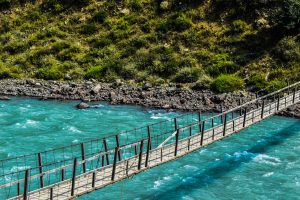
Swat Valley, often referred to as the “Switzerland of the East,” is a picturesque region located in the Khyber Pakhtunkhwa province of Pakistan. Famous for its lush green valleys, clear rivers, and snow-capped mountains, Swat is a prime destination for nature lovers, adventure seekers, and history enthusiasts alike.
The valley is bisected by the Swat River, which flows through the area, providing a serene and peaceful atmosphere. Surrounding the valley are towering peaks, forests, and terraced fields, offering stunning views throughout the year. Swat is particularly known for its scenic spots like Malam Jabba (a famous skiing resort), Mingora, Fizagat, Bahrain, and the mesmerizing Kalam Valley.
Historically, Swat has been a significant cultural hub, with ancient Buddhist heritage sites such as the famous Butkara Stupa and remains of monasteries scattered throughout the valley. These reflect its past as a center of Buddhist civilization under the ancient Gandhara kingdom. The valley’s archaeological treasures continue to attract scholars and tourists from around the world.
Swat is also renowned for its warm and welcoming people, rich traditions, and vibrant cultural festivals. The valley offers numerous activities, including trekking, skiing, river rafting, and exploring the rich history and local markets filled with handicrafts, fruits, and honey.
With its unparalleled beauty, ancient history, and opportunities for adventure, Swat Valley is a must-visit destination that showcases the diverse natural and cultural wonders of Pakistan.
03. Kalash Valley
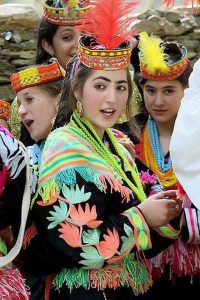
Kalash Valley, located in the Chitral district of Pakistan’s Khyber Pakhtunkhwa province, is a mesmerizing and culturally unique region. Nestled in the remote, rugged mountains of the Hindu Kush range, Kalash is known for its pristine beauty, vibrant culture, and ancient traditions that have remained largely untouched by time.
The valley is actually a group of three smaller valleys – Bumburet, Rumbur, and Birir – each offering stunning landscapes of lush green fields, terraced hillsides, crystal-clear streams, and dense forests. The valley’s scenery is a peaceful blend of natural beauty, with wooden houses built on mountain slopes that overlook the picturesque surroundings.
What makes Kalash Valley truly special is its indigenous people, the Kalasha, who are known for their distinctive culture, language, and polytheistic religious practices. The Kalasha people wear colorful, handmade traditional attire and are famous for their joyous festivals, such as Chilam Joshi and Uchal, where they celebrate life, harvests, and their unique heritage with dance, music, and feasts. The vibrant culture of the Kalasha people, combined with their open-hearted hospitality, offers visitors a chance to experience something truly rare.
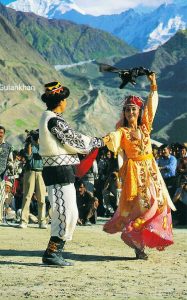
Kalash Valley feels like a step into an ancient world, where the deep-rooted connection to nature and traditions stands in contrast to modern life. It is not only a place of stunning natural beauty but also a living cultural treasure, making it one of the most fascinating and enchanting destinations in northern Pakistan.
4. Skardu
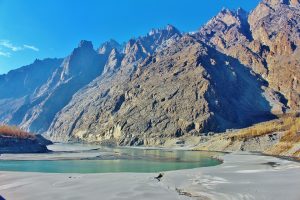
Skardu, the gateway to some of the world’s highest peaks and largest glaciers, is a mesmerizing city located in Gilgit-Baltistan, northern Pakistan. Nestled in the heart of the Karakoram Range at an elevation of about 2,200 meters (7,200 feet), Skardu is surrounded by towering mountains, dramatic landscapes, and a rich cultural heritage, making it a dream destination for adventurers, mountaineers, and nature enthusiasts.
Skardu is renowned for its breathtaking natural beauty. The city sits along the banks of the mighty Indus River, which flows through the region, adding to its stunning charm. Majestic snow-capped peaks like K2, the world’s second-highest mountain, Broad Peak, and the Gasherbrum range loom in the distance. The landscape around Skardu is a mix of sandy plains, lush green meadows, and crystal-clear lakes, with Satpara Lake and Shangrila Resort (Lower Kachura Lake) being among the most famous.
For adventure seekers, Skardu serves as the base for expeditions to some of the most challenging trekking routes and climbing destinations in the world. From here, mountaineers set off to conquer K2 and other formidable peaks, while trekkers embark on the awe-inspiring Baltoro Glacier and Concordia, often referred to as the “Throne Room of the Mountain Gods.” The Deosai National Park, a vast plateau often called the “Land of Giants,” is also just a short distance away, offering visitors a chance to witness its stunning landscapes, wildlife, and endless fields of wildflowers.
Skardu has a rich cultural heritage, with influences from Tibet, Central Asia, and the surrounding regions. The Balti people, who inhabit the region, are known for their distinct language, traditions, and warm hospitality. The city is home to ancient forts, including the iconic Skardu Fort (also known as Kharpocho Fort), which offers panoramic views of the valley below. Shigar Fort, a 400-year-old palace, has been beautifully restored and is now a luxury hotel, offering a blend of history and modern comfort.
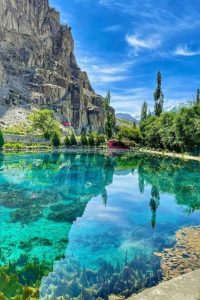
In addition to its mountainous allure, Skardu is surrounded by pristine lakes and valleys that enhance its serene atmosphere. Upper Kachura Lake, with its crystal-clear water reflecting the surrounding mountains, is a hidden gem for nature lovers, while Satpara Lake, with its turquoise waters, is a favorite spot for boating and fishing. The Shigar and Khaplu valleys, known for their lush greenery, fruit orchards, and historical significance, are nearby, offering a peaceful escape into nature.
Skardu is also a place to immerse in unique cultural experiences. The locals celebrate traditional festivals, such as the Shandur Polo Festival, where polo is played on the world’s highest polo ground. The region’s cuisine, especially its local Balti dishes like “Chapshoro” and “Skardu bread,” provides a flavorful taste of the area’s rich culinary heritage.
Skardu City is not just a destination; it’s an experience. Whether it’s the towering peaks, crystal-clear lakes, vibrant culture, or ancient forts, Skardu offers something for everyone. Its combination of adventure, natural beauty, and history makes it one of the most fascinating places to visit in Pakistan. For travelers seeking both tranquility and thrill, Skardu is an unforgettable place that leaves a lasting impression on all who visit.
05. Azad Kashmir
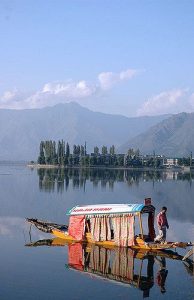
Kashmir, often referred to as “Paradise on Earth,” is a breathtaking region in South Asia, known for its stunning natural beauty, lush landscapes, and rich cultural heritage. Nestled between the majestic Himalayan and Pir Panjal mountain ranges, Kashmir’s beauty is unparalleled, offering an idyllic mix of snow-capped peaks, verdant valleys, sparkling rivers, and serene lakes.
Kashmir’s landscapes are a painter’s dream. The region is famed for its endless meadows, like the picturesque valleys of Pahalgam, Sonmarg, and Gulmarg, which turn into carpets of wildflowers in spring and are blanketed in snow during winter. The pristine Dal Lake and Nigeen Lake in Srinagar, with their iconic houseboats and vibrant floating gardens, offer a tranquil experience, reflecting the surrounding mountains and Mughal-era gardens on their glassy surface.
The breathtaking beauty of these lakes is complemented by the peaceful shikara rides, where tourists can glide through the calm waters while taking in the stunning surroundings. In autumn, the landscape is painted in shades of gold and red as the chinar trees shed their leaves, transforming the valley into a vibrant palette of colors.
The snow-capped peaks of Kashmir are a dominant feature of its landscape, creating a dramatic and awe-inspiring backdrop to its lush valleys. The region’s towering mountains, including some of the world’s highest and most challenging peaks, provide a haven for adventure enthusiasts. Trekking, mountaineering, and skiing in Gulmarg are popular activities that attract adventure seekers from around the globe.
The mighty Himalayan range adds a sense of grandeur, especially in areas like the Amarnath Cave, where pilgrims embark on a spiritual journey amidst the region’s rugged beauty.
Kashmir is renowned for its historic Mughal gardens, such as Shalimar Bagh, Nishat Bagh, and Chashme Shahi, which showcase meticulously designed terraced landscapes, fountains, and flower beds. These gardens, set against the backdrop of Dal Lake and the surrounding mountains, are a testament to the Mughal emperors’ love for nature and beauty.
The valley is also dotted with fruit orchards, especially of apples, cherries, and apricots, which come into full bloom in the spring and autumn. The scent of these blossoms fills the air, adding to the sensory delight of the region.
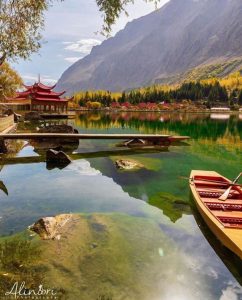
Kashmir’s cultural beauty is as captivating as its landscapes. The region is home to a rich heritage of art, music, and handicrafts. Kashmiri shawls, carpets, and intricate woodwork are world-renowned for their craftsmanship. The Sufi music and poetry, along with the region’s spiritual and philosophical traditions, offer a deep connection to its cultural roots.
Kashmir is a land of unmatched beauty, where nature, culture, and serenity come together to create a paradise on earth. From its tranquil lakes and blossoming gardens to its majestic mountains and welcoming people, Kashmir offers a unique and unforgettable experience for all who visit. Its timeless charm and breathtaking landscapes continue to inspire poets, travelers, and nature lovers around the world.
6. Neelum Valley
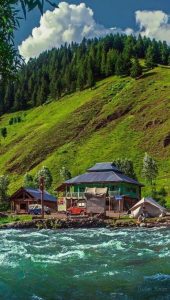
Neelam Valley, often called the “Blue Gem of Pakistan,” is a stunningly beautiful region located in Azad Kashmir. Known for its verdant forests, crystal-clear rivers, and snow-capped mountains, the valley is named after the Neelam River, which flows through it like a ribbon of sparkling blue water, adding to its ethereal beauty.
Neelam Valley is renowned for its unspoiled landscapes that seem to be taken straight out of a fairy tale. The valley is framed by towering peaks of the Himalayan range, covered in dense forests of pine, cedar, and deodar trees. Rolling green meadows, dotted with wildflowers, stretch for miles, while sparkling waterfalls cascade down the mountainsides, adding to the valley’s serenity.
During the summer, the valley bursts into life with vibrant colors, offering views of lush greenery and blooming flowers. In winter, Neelam Valley is transformed into a snow-covered wonderland, with the mountains and forests blanketed in white, offering a peaceful, magical atmosphere.
The Neelam River is the heart of the valley, its striking blue waters winding through the picturesque landscape. The river’s beauty, especially when viewed against the backdrop of lush green mountains, is captivating. Many villages and towns are set along its banks, where locals live in harmony with nature. The sound of the rushing river, combined with the views of the surrounding mountains, creates a peaceful ambiance, perfect for relaxation and reflection.
Neelam Valley is home to a series of scenic villages, each offering its own unique charm. Kel, Sharda, and Keran are some of the most famous, each nestled in the valley’s lush greenery with awe-inspiring views of the surrounding mountains. Sharda is also known for its ancient ruins of a Buddhist monastery, adding a historical and cultural dimension to the valley’s beauty.
The village of Arang Kel, often referred to as the “Pearl of Neelam Valley,” is particularly captivating. Perched on a hilltop, this secluded village can be reached via a trek or a thrilling chairlift ride, rewarding visitors with panoramic views of the valley below.
The valley is also home to some of the most pristine lakes and meadows in Pakistan. Ratti Gali Lake, a high-altitude glacial lake, is a major attraction. Surrounded by towering snow-capped peaks, the lake’s blue waters are a sight to behold, making it a favorite destination for trekkers and nature lovers.
The meadows of Taobat, situated at the far end of the valley, offer a peaceful retreat with open spaces, wildflowers, and stunning views of the surrounding mountains and forests.
Neelam Valley is a haven for wildlife, with its forests providing a home to a variety of species, including Himalayan black bears, snow leopards, and different species of birds. The valley’s natural beauty and biodiversity make it an important ecological area, perfect for those interested in wildlife photography or simply appreciating the raw beauty of nature.
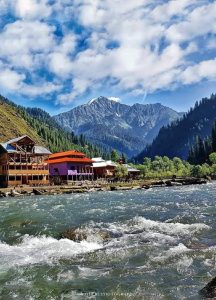
The people of Neelam Valley are known for their hospitality and warmth. The local culture is deeply tied to the natural environment, with traditional wooden homes built on slopes overlooking the valley. Visitors are often welcomed with open arms and offered a glimpse into the simple yet fulfilling lifestyle of the local communities.
Neelam Valley is a natural paradise, where the beauty of untouched landscapes, majestic rivers, serene lakes, and towering mountains come together to create a place of peace and wonder. Whether it’s the vibrant greenery of summer or the magical snow-covered scenes of winter, Neelam Valley offers a timeless beauty that captivates all who visit. It’s a place where nature’s splendor is at its peak, providing a perfect escape for travelers seeking both adventure and tranquility.
7. Mohenjo-Daro
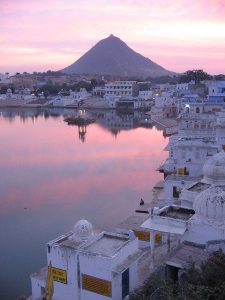
The beauty of Mohenjo-Daro lies in its extraordinary preservation of an ancient civilization that flourished over 4,500 years ago, offering a rare glimpse into the ingenuity and sophistication of one of the world’s earliest urban centers. Although it may not be adorned with grand temples or palaces like other ancient cities, its allure comes from its architectural brilliance, advanced urban planning, and the timeless mystery that surrounds it.
Mohenjo-Daro’s beauty is reflected in the precision and simplicity of its architecture. The city was constructed using uniform baked bricks, a hallmark of the Indus Valley Civilization, showcasing symmetry and functionality. The streets are laid out in a well-planned grid pattern, reflecting a sense of order and rationality. The ruins of houses, wells, and courtyards speak of a people who lived harmoniously within a meticulously designed urban environment.
Even in its ruined state, the city evokes a sense of grandeur, with the wide streets and large public buildings like the **Great Bath** standing as a testament to the importance of community life and social practices. The Great Bath itself is an architectural marvel, with its expertly constructed water tank and surrounding platforms that once played a central role in ritualistic or ceremonial life. Its serene, almost meditative atmosphere hints at the spiritual beauty that once flourished in this ancient city.
Among the most celebrated discoveries in Mohenjo-Daro is the **Dancing Girl**, a bronze statuette that exudes grace, poise, and artistic beauty. This iconic artifact encapsulates the artistic refinement of the city’s inhabitants, symbolizing their appreciation for art and expression. Other artifacts, such as intricate pottery, jewelry, seals, and figurines, reveal a deep connection to creativity, craftsmanship, and aesthetic beauty. These relics are a reflection of the everyday life, belief systems, and cultural values of the people, offering a beautiful glimpse into their artistic legacy.
The beauty of Mohenjo-Daro is found in the harmony of its architectural achievements, its cultural richness, and the sense of wonder that surrounds this ancient city. It is a place where the past comes alive, offering us a glimpse into the ingenuity of Mohenjo-Daro.
The silent ruins, though weathered by time, speak of a people who valued order, creativity, and community, making Mohenjo-Daro not only a symbol of historical importance but a timeless work of art in its own right.
8. Kaghan Valley
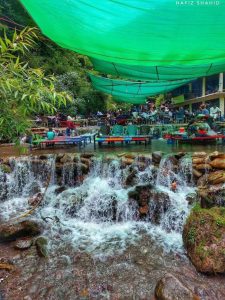
Kaghan Valley, located in Pakistan’s Khyber Pakhtunkhwa province, is a paradise of natural beauty, often hailed as one of the most scenic valleys in the country. Stretching over 160 kilometers, the valley is renowned for its towering snow-capped mountains, lush green meadows, crystal-clear rivers, and pristine alpine lakes, offering a captivating blend of landscapes that change with the seasons.
Surrounded by the mighty Himalayan peaks, Kaghan Valley is blessed with awe-inspiring mountain vistas. The rugged, snow-clad mountains serve as a stunning backdrop to the valley’s rolling meadows and pine forests, creating postcard-perfect views at every turn. These mountains not only provide breathtaking scenery but also offer thrilling opportunities for trekking, hiking, and adventure sports.
The valley is home to some of the most beautiful lakes in Pakistan, with ‘Lake Saif-ul-Malook’ being the crown jewel. Nestled at an altitude of 3,224 meters, Saif-ul-Malook is known for its emerald green waters that reflect the surrounding snow-capped peaks, creating a magical and tranquil atmosphere. Legend has it that fairies visit the lake at night, adding a mystical allure to its natural beauty.
Another stunning lake is ‘Lulusar Lake’, a large glacial lake surrounded by lush meadows and towering mountains. The still waters of the lake mirror the sky and mountains, offering a peaceful and serene setting for visitors.
Kaghan Valley is adorned with lush, rolling meadows that are carpeted with wildflowers in the summer. ‘Shogran’, a popular hill station in the valley, is surrounded by dense pine forests and offers panoramic views of the valley and surrounding peaks. From Shogran, visitors can trek or take a jeep ride to “Siri Paye”, a high-altitude meadow where vast stretches of greenery, alpine flowers, and distant snow-covered peaks create a scene of untouched beauty.
The valley’s natural forests, rich in pine, cedar, and fir trees, provide an escape into nature, with birds chirping in the background and the fresh mountain air filling the atmosphere. These forests are home to diverse wildlife, adding to the valley’s ecological richness.
At the northern end of the valley lies ‘Babusar Pass’, one of the highest mountains passes in Pakistan, standing at an elevation of about 4,173 meters. The pass connects Kaghan Valley to Gilgit-Baltistan and offers some of the most dramatic and sweeping views of the surrounding mountains and valleys. Driving up to Babusar Pass provides a thrilling experience, as the winding road ascends through breathtaking landscapes.
The ‘Kunhar River’ runs through the heart of Kaghan Valley, its crystal-clear waters fed by glaciers and snowmelt from the surrounding mountains. The river’s rushing waters, framed by lush greenery and rocky cliffs, add to the valley’s serene and invigorating ambiance. Along the riverbanks, visitors can enjoy trout fishing or simply relax, listening to the soothing sound of the flowing water.
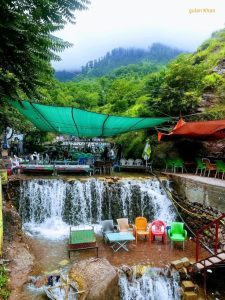
Kaghan Valley’s beauty transforms with the seasons, offering a different experience throughout the year. In spring and summer, the valley comes alive with vibrant greenery, blooming flowers, and pleasant weather, making it a perfect time for hiking, camping, and sightseeing. The clear skies and mild temperatures allow for uninterrupted views of the towering peaks and alpine lakes.
In autumn, the valley turns golden as the trees shed their leaves, adding warm hues to the landscape. Winter brings a blanket of snow, turning the valley into a wonderland for snow enthusiasts. The snow-covered mountains, frozen lakes, and peaceful silence create an atmosphere of winter magic.
Kaghan Valley is a natural treasure, where every corner offers breathtaking views of majestic mountains, serene lakes, and verdant meadows. Its pristine landscapes, coupled with its rich cultural heritage, make it a must-visit destination for nature lovers, adventurers, and anyone seeking peace and tranquility. Whether it’s the enchanting Lake Saif-ul-Malook, the grandeur of Babusar Pass, or the lush greenery of Siri Paye, Kaghan Valley’s beauty is bound to leave an indelible mark on all who visit.
9. Fairy Meadows
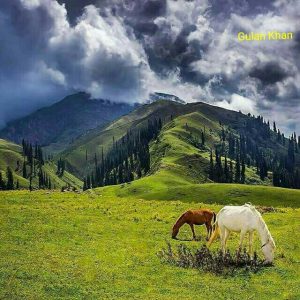
Fairy Meadows, located in Pakistan’s Gilgit-Baltistan region, is a place of unparalleled beauty that feels like a magical realm, as its name suggests. Nestled at the base of the towering “Nanga Parbat”—the world’s ninth-highest peak—this enchanting meadow offers a breathtaking combination of lush greenery, snow-capped mountains, and serene alpine landscapes. The tranquil beauty of Fairy Meadows has made it a popular destination for trekkers, nature lovers, and photographers alike.
One of the most striking aspects of Fairy Meadows is its spectacular view of “Nanga Parbat”, also known as the “Killer Mountain” due to its challenging climbs. Rising to 8,126 meters, Nanga Parbat looms majestically over the meadows, creating a jaw-dropping backdrop. As the sunlight shifts throughout the day, the mountain’s snowy slopes take on different hues, from bright white in the morning to golden orange at sunset. This stunning panorama, combined with the lush green foreground of the meadows, offers one of the most breathtaking natural views in the world.
The meadows themselves are an oasis of greenery, framed by dense forests of pine and fir trees. During the summer months, the lush grass is dotted with colorful wildflowers, creating a picturesque contrast to the rugged, snow-covered peaks surrounding the valley. The expanse of Fairy Meadows provides a peaceful, open space where visitors can camp, walk, or simply relax while soaking in the beauty of nature.
Winding through the meadows are crystal-clear streams fed by glaciers and snowmelt from Nanga Parbat. These serene waters, reflecting the surrounding landscape, add to the magical atmosphere of the area. The sound of flowing water blends harmoniously with the peaceful silence of the meadows, enhancing the sense of tranquility and connection to nature.
Fairy Meadows serves as the starting point for trekkers heading to Nanga Parbat’s “Base Camp”, one of the most thrilling and scenic treks in Pakistan. The trail offers incredible views of the surrounding mountains, glaciers, and valleys, with each step bringing a new sense of awe. The trek passes through alpine forests, glacier-fed rivers, and rugged terrain, making it a perfect destination for adventure enthusiasts.
One of the most magical experiences at Fairy Meadows is the night sky. Far from any city lights, the meadow offers an unobstructed view of the stars, turning the sky into a dazzling canvas of twinkling lights. On a clear night, the Milky Way is visible in all its glory, and the bright peaks of Nanga Parbat appear to glow in the moonlight. The combination of the starry sky and the towering mountain in the background creates an almost surreal scene, making Fairy Meadows a paradise for stargazers and photographers.
Fairy Meadows offers different kinds of beauty depending on the season. In summer, the meadow is a vibrant green paradise filled with life, while in autumn, the leaves turn golden, creating a warm, cozy atmosphere. Winter transforms the area into a winter wonderland, with the meadows and surrounding forests blanketed in snow, making it a magical, though more challenging, destination for visitors.
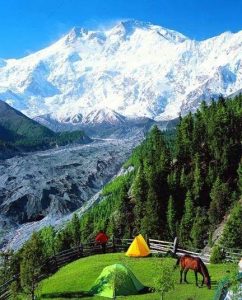
The journey to Fairy Meadows is an adventure in itself, with a thrilling jeep ride followed by a hike through rugged mountain terrain. This remoteness is part of what makes Fairy Meadows so special—its isolation allows visitors to experience the unspoiled beauty of nature in its purest form. Far from the noise and distractions of everyday life, Fairy Meadows offers a serene, almost spiritual retreat for those looking to connect with nature.
Fairy Meadows is a place of extraordinary natural beauty, where the grandeur of Nanga Parbat meets the tranquility of lush meadows and alpine forests. Its pristine landscapes, crystal-clear streams, and majestic views create a dreamlike environment that captivates all who visit. Whether you’re seeking adventure, peace, or simply a moment to admire the wonders of the natural world, Fairy Meadows offers an experience that feels truly magical, living up to its name as a “fairy tale” destination.
10. Badshahi Masjid Lahore
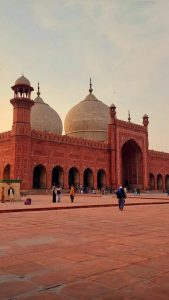
The Badshahi Mosque in Lahore, Pakistan, is a stunning example of Mughal architecture and one of the largest and most magnificent mosques in the world. Completed in 1673 under the reign of Emperor Aurangzeb, this architectural marvel is renowned for its grandeur, intricate design, and historical significance. Its beauty lies not only in its impressive scale but also in the delicate craftsmanship and timeless elegance that define its structure.
The Badshahi Mosque is celebrated for its grand scale and symmetry. The mosque’s large courtyard, capable of accommodating up to 55,000 worshippers, is one of the largest of its kind. The mosque is built of red sandstone, which gives it a rich, warm hue, beautifully contrasting with the white marble used for the decorative elements. This combination of materials adds to the mosque’s visual appeal and historical significance.
The mosque’s central prayer hall is a masterpiece of Mughal architecture. Its high, arched doorways and vast interior spaces are adorned with intricate floral motifs and geometric patterns. The prayer hall is flanked by four minarets, each standing at 70 meters (230 feet), and topped with elegant domes that contribute to the mosque’s imposing silhouette. The grandeur of these minarets and domes enhances the mosque’s majestic presence in Lahore’s skyline.
The Badshahi Mosque is renowned for its exquisite decoration. The interior walls and ceilings are adorned with intricate calligraphy, frescoes, and inlaid marble designs. The mosque’s decorative elements include beautiful tile work and ornate stucco designs, reflecting the artistic sophistication of the Mughal era. The use of marble inlay, particularly in the prayer hall, adds a touch of opulence and artistry.
One of the most notable features is the mosque’s “praise hall”, ceiling, which is intricately decorated with delicate floral patterns and Quranic verses. The craftsmanship in these designs is a testament to the skilled artisans of the Mughal period.
The Badshahi Mosque holds a significant place in the cultural and historical landscape of Pakistan. It was built to rival the grandeur of the Jama Masjid in Delhi, and its construction marked a high point in Mughal architectural achievements. The mosque has been a center of worship and a symbol of Mughal power and culture for centuries.
The mosque’s historical significance is also reflected in its use over the years. It has served as a venue for important events and gatherings, including the famous address by Muhammad Ali Jinnah, the founder of Pakistan, during the independence movement.
The mosque’s location in Lahore provides stunning panoramic views of the city and the surrounding landscape. From the mosque’s minarets and surrounding terraces, visitors can enjoy a sweeping view of Lahore’s skyline, with its blend of historical and modern structures. The contrast between the historical architecture of the mosque and the contemporary cityscape adds to the visual richness of the experience.
The Badshahi Mosque has been meticulously preserved and restored over the centuries, maintaining its original splendor and historical integrity. The ongoing efforts to conserve and protect this architectural gem ensure that future generations will continue to appreciate its beauty and significance.
The Badshahi Mosque is a masterpiece of Mughal architecture, known for its grandeur, intricate decoration, and historical significance. Its imposing structure, rich red sandstone, and elegant marble details make it a symbol of architectural excellence and cultural heritage. Whether admired for its architectural brilliance, historical importance, or serene beauty, the Badshahi Mosque stands as a timeless testament to the artistic and cultural achievements of the Mughal Empire.

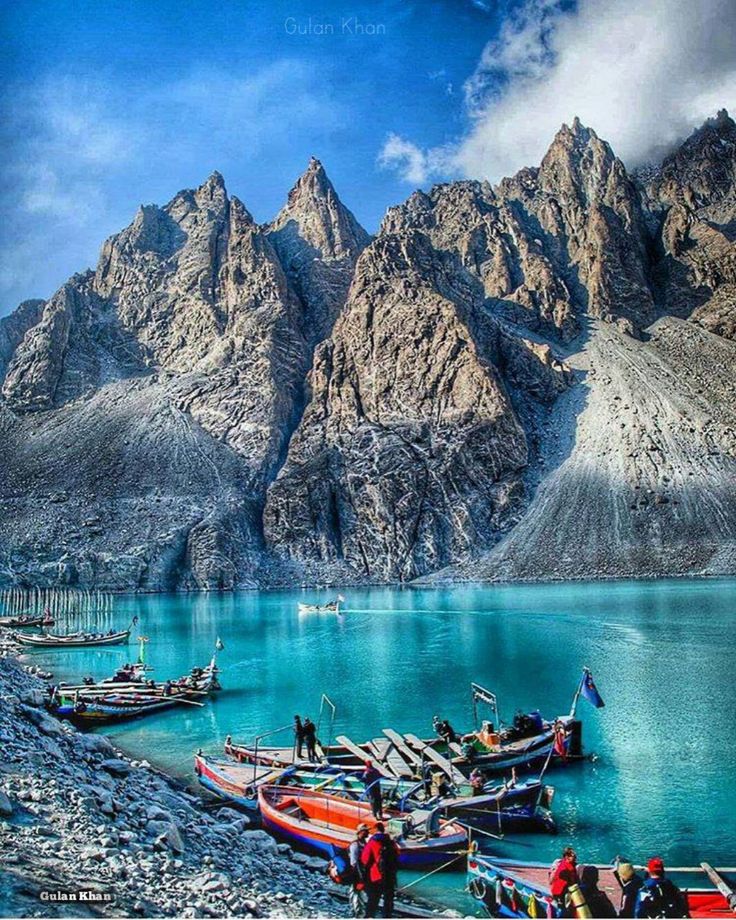
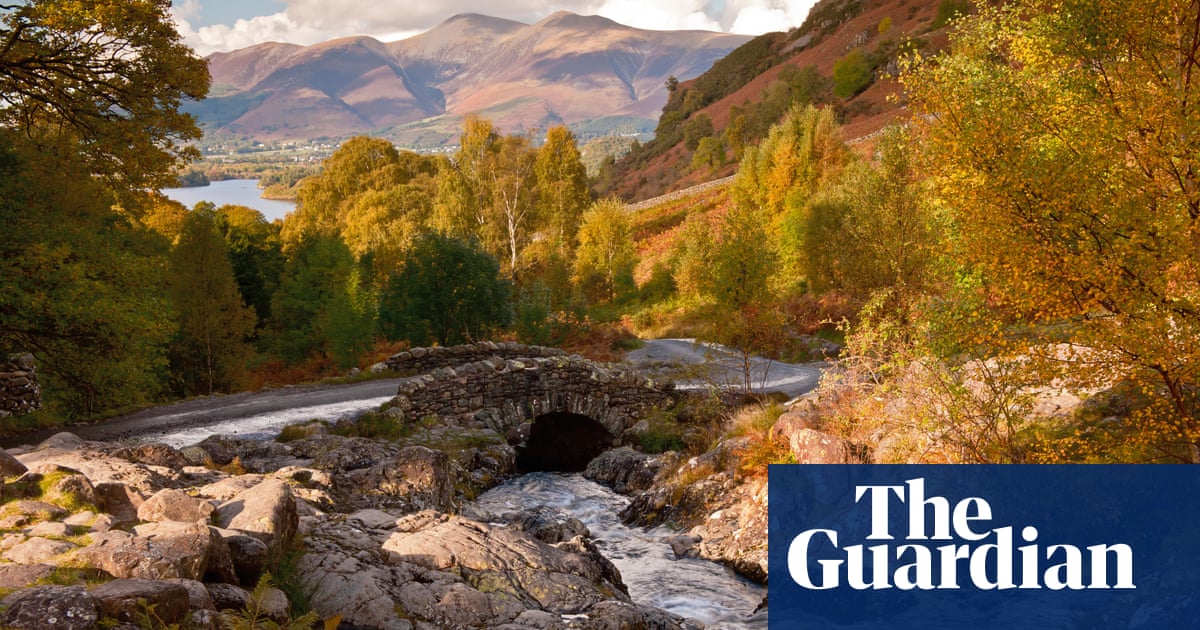



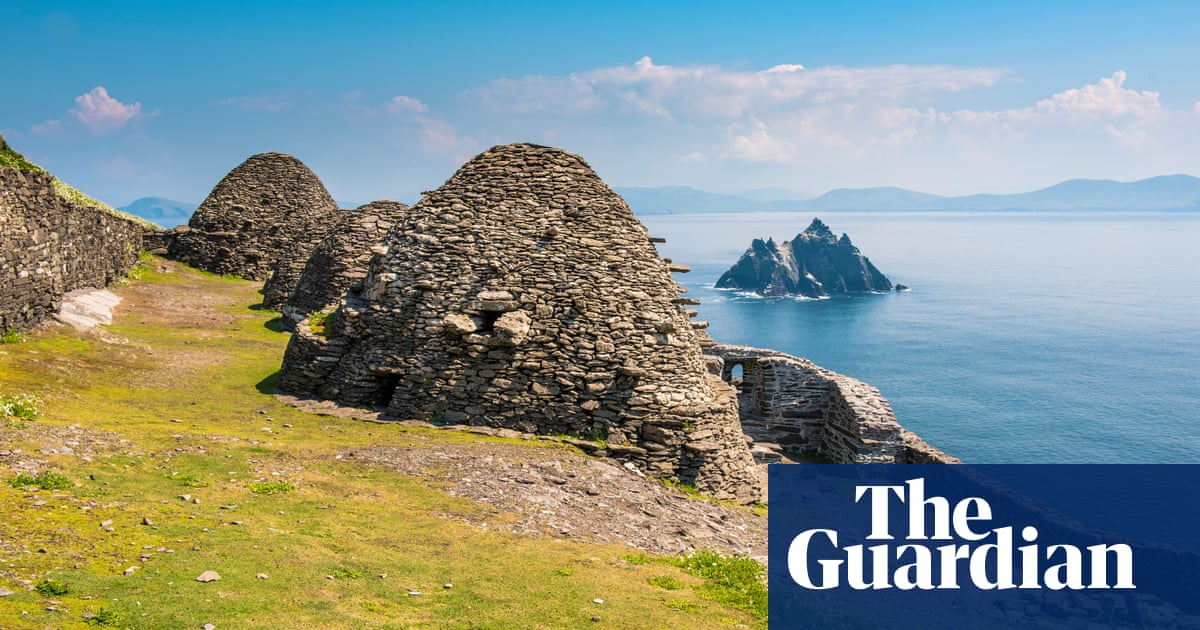
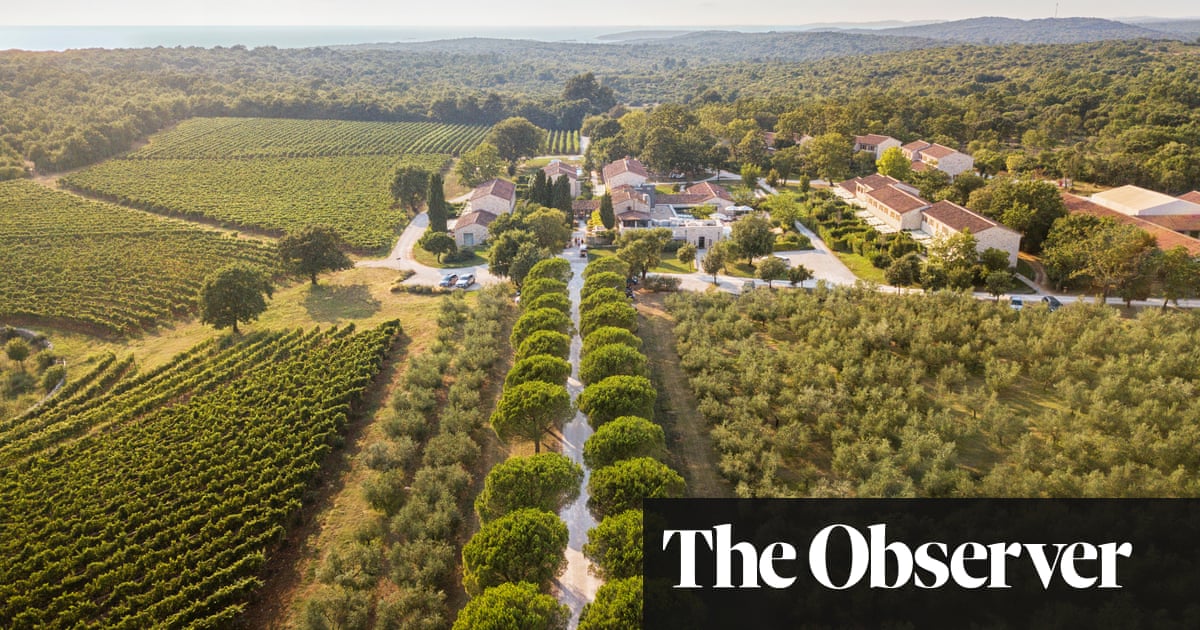


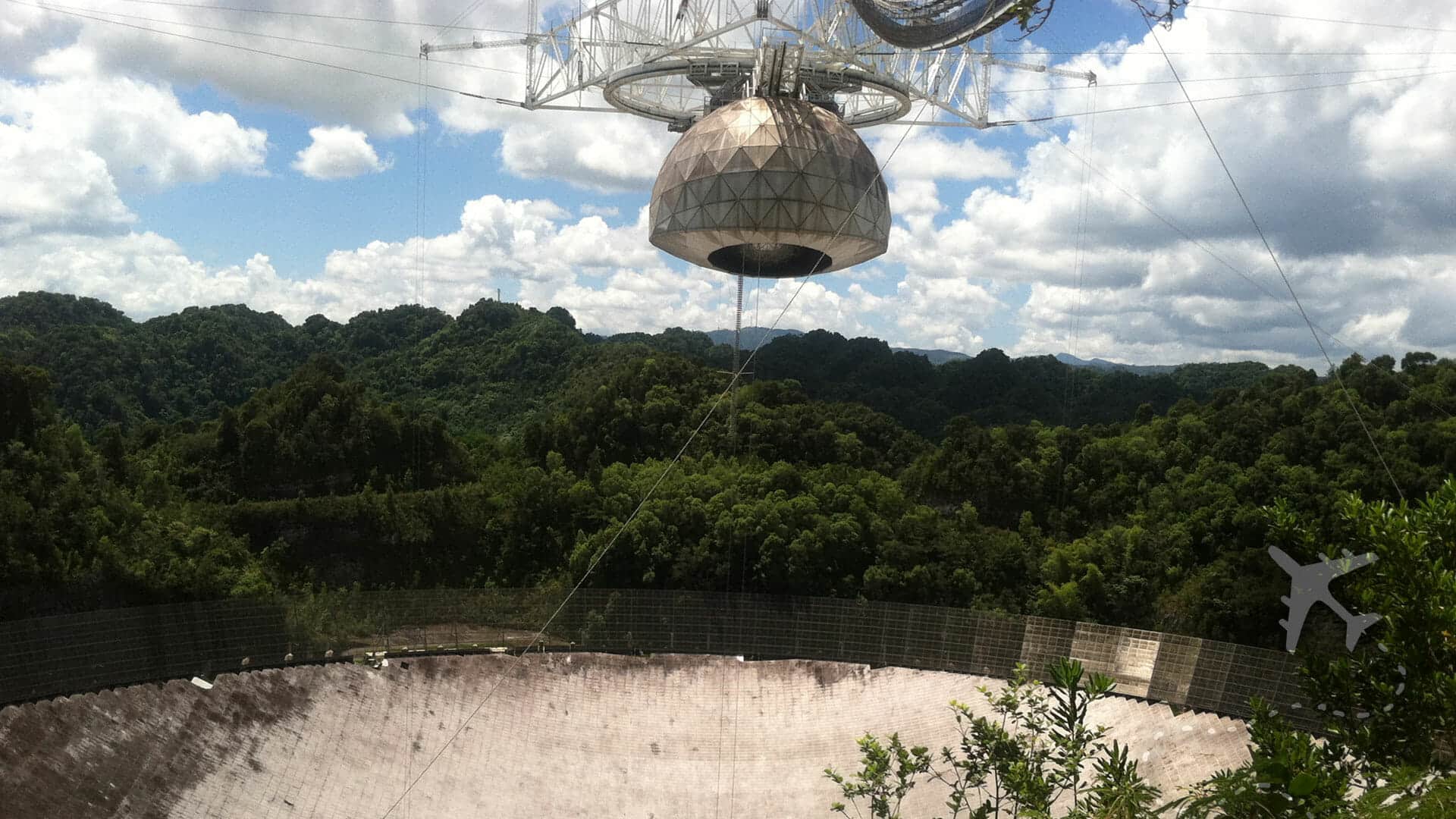
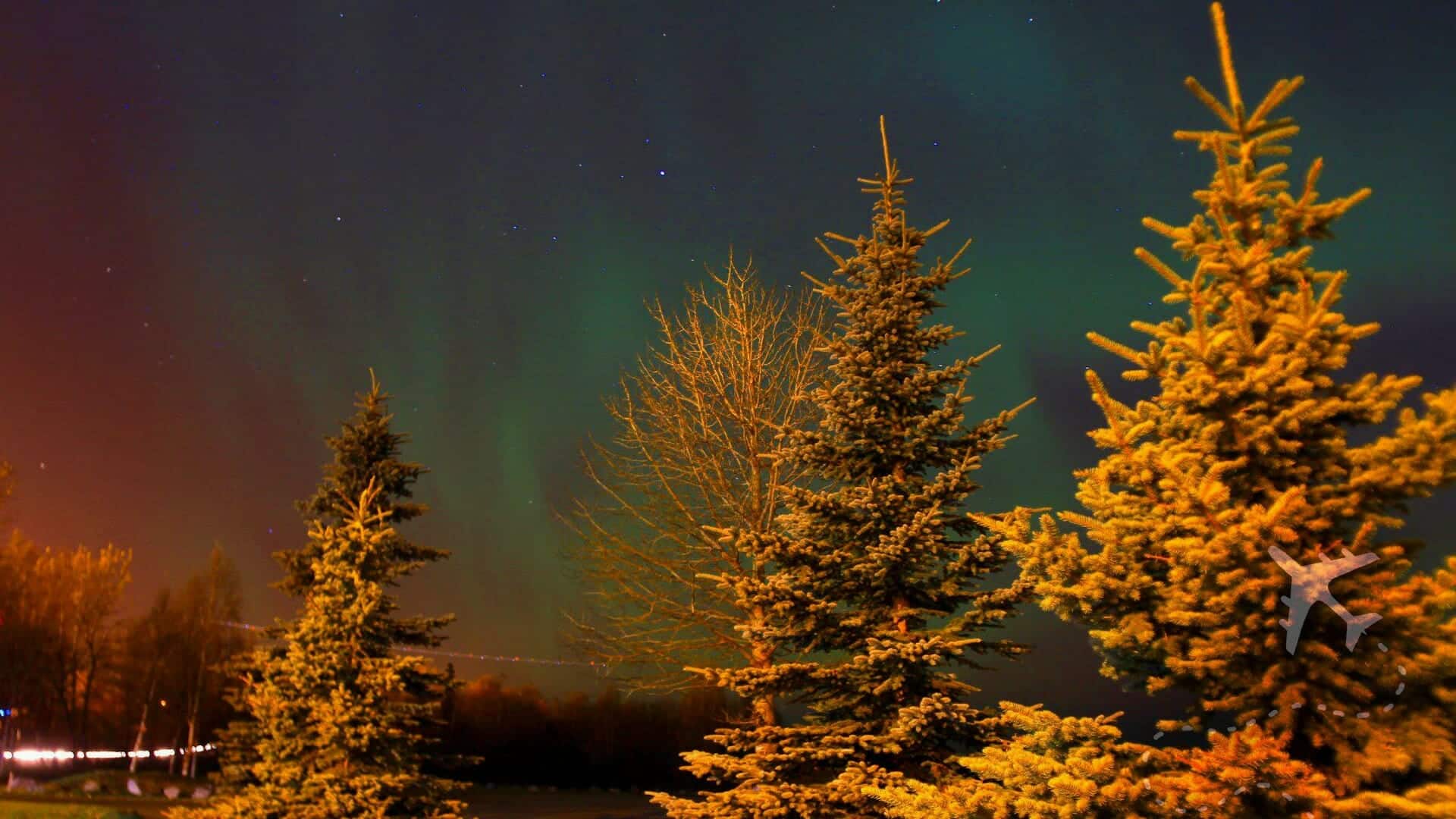


Leave a Reply